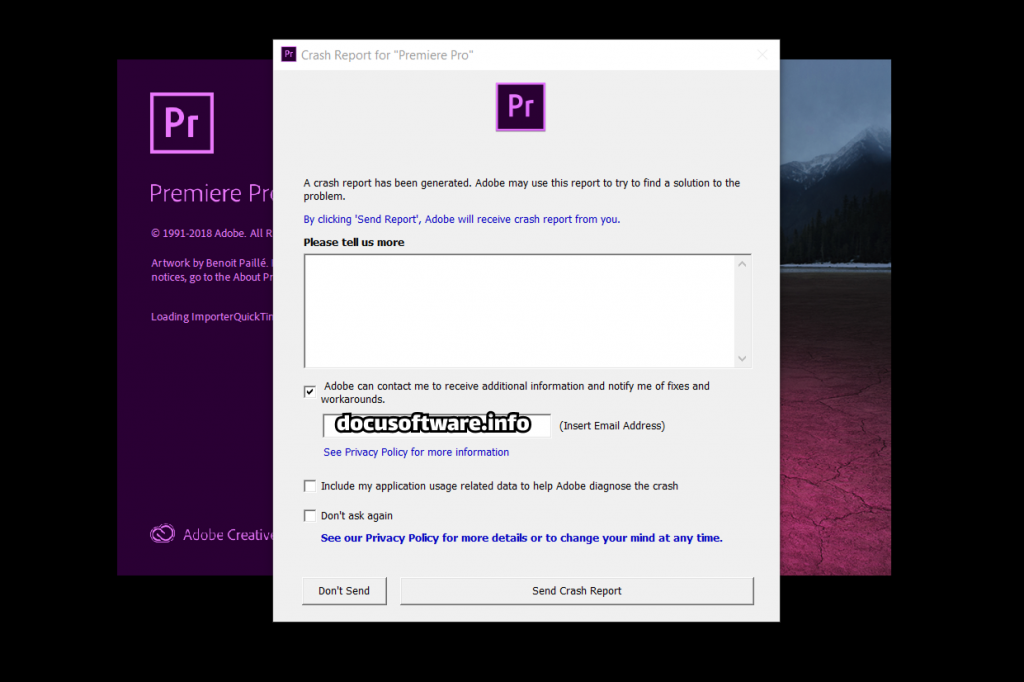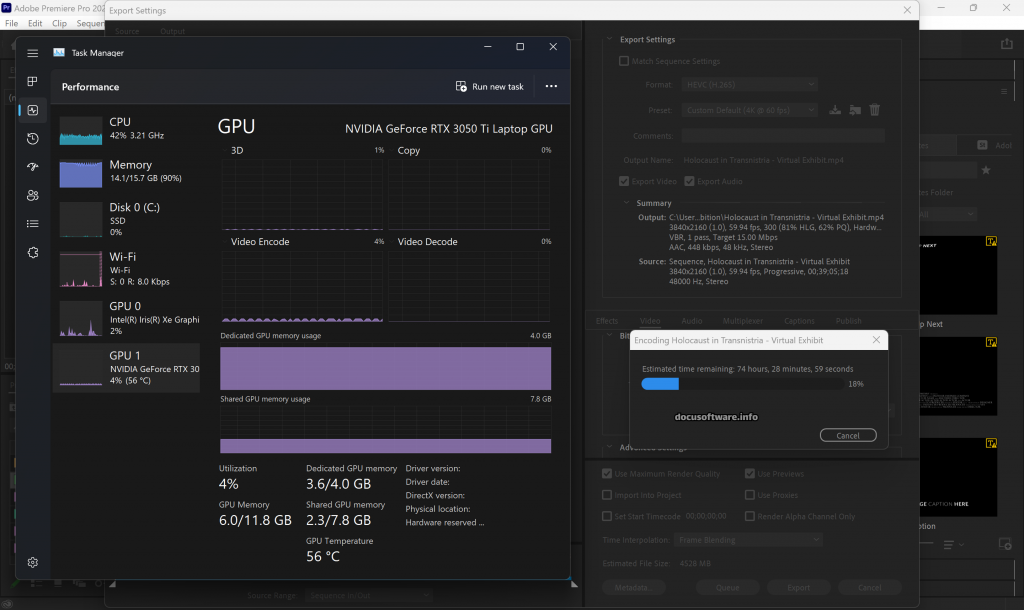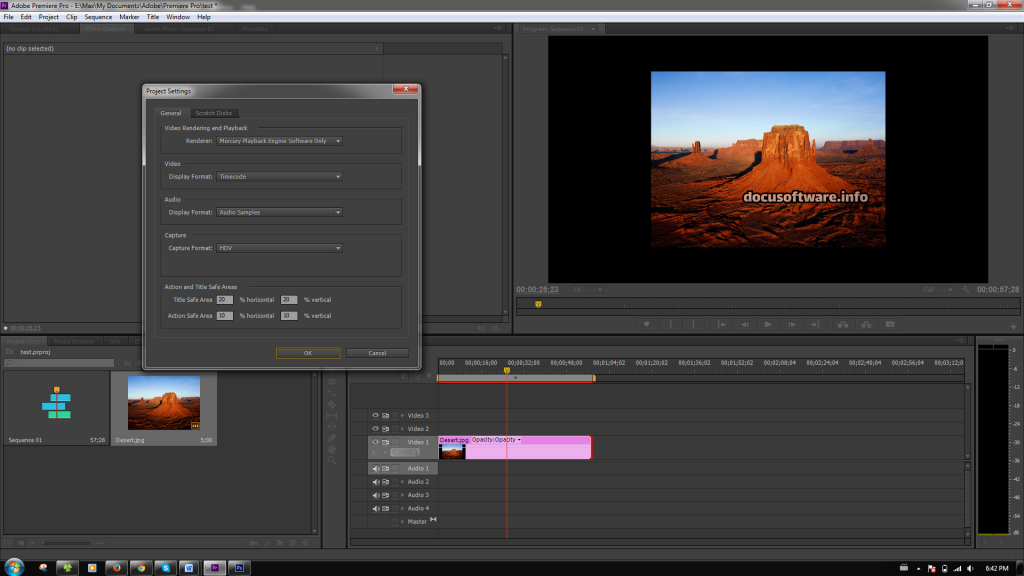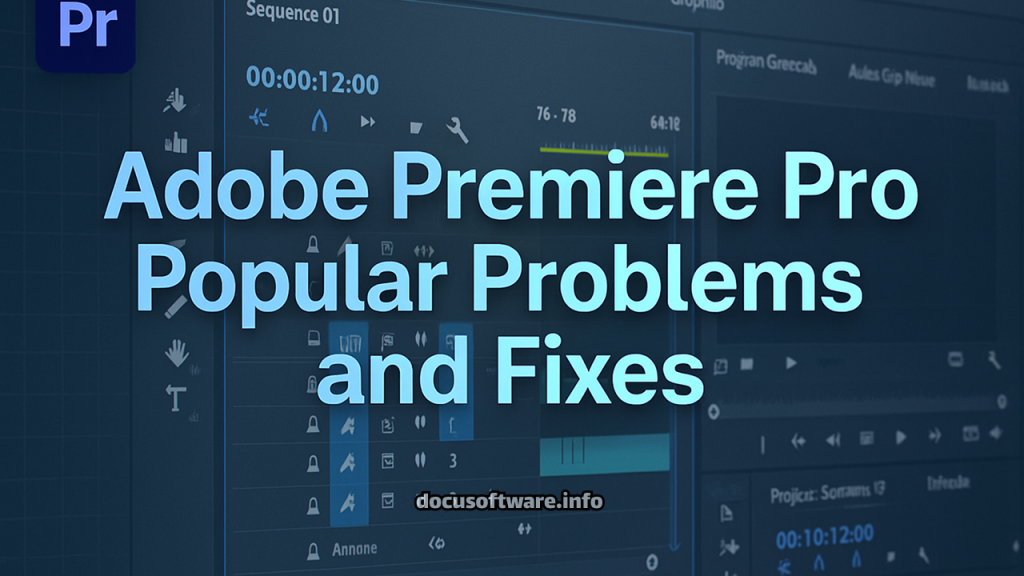Introduction: Mastering Premiere Pro Performance
Adobe Premiere Pro stands as the industry-leading video editing software, powering creative workflows from Hollywood blockbusters to YouTube content creation. However, even this professional-grade application encounters technical challenges that can disrupt productivity. This comprehensive guide addresses the most prevalent Premiere Pro issues, providing actionable solutions backed by real-world testing and professional expertise.
Whether you’re experiencing crashes during export, timeline lag, media offline errors, or performance bottlenecks, understanding the root causes and systematic troubleshooting approaches will transform your editing experience from frustrating to fluid.
Critical System Requirements and Optimization
Understanding Hardware Requirements
Before diving into specific problems, ensuring your system meets Premiere Pro’s demanding specifications is fundamental. Insufficient hardware remains the primary cause of performance issues and crashes.
Minimum vs. Recommended Specifications:
Windows Requirements:
- Processor: 8th generation Intel Core i5 (minimum) / 12th generation Intel Core i7 or AMD Ryzen 7000 series (recommended)
- RAM: 16 GB (minimum) / 32-64 GB for 4K+ workflows (recommended)
- GPU: 4 GB VRAM with DirectX 12 support / 8+ GB VRAM for heavy effects
- Storage: Fast NVMe SSD for cache and media files
macOS Requirements:
- Apple Silicon: M1 chip with 8 GB Unified Memory (minimum) / M2 Pro/Max with 32+ GB (recommended)
- Intel Macs: Deprecated but supported with 16+ GB RAM minimum
- Storage: Internal SSD or Thunderbolt 3/4 external drives
System Optimization Techniques
Storage Configuration Best Practices:
- Separate SSDs for OS, cache files, and project media
- Avoid mechanical HDDs for active project files
- Maintain 20% free space on working drives
- Use RAID configurations for large-scale productions
Background Process Management:
- Disable unnecessary startup programs
- Close resource-intensive applications (Chrome, Spotify, Discord)
- Monitor CPU/RAM usage via Task Manager or Activity Monitor
- Disable Windows Game Mode and Xbox Game Bar
Premiere Pro Crashing Issues and Solutions

Crash on Launch Problems
When Premiere Pro crashes immediately upon startup or hangs on the splash screen, systematic troubleshooting reveals the culprit.
Primary Solutions:
- Reset Preferences (Most Effective)
- Hold Alt/Option + Shift while launching Premiere Pro
- Click “OK” when prompted to reset preferences
- Reconfigure essential settings after successful launch
- Safe Mode Launch
- Hold Shift while opening Premiere Pro
- Disables third-party plugins temporarily
- Identifies plugin conflicts causing startup crashes
- Graphics Driver Remediation
- Update to latest NVIDIA Studio or AMD Pro drivers
- Avoid gaming-optimized drivers (GeForce Game Ready)
- Roll back if recent updates caused instability
Export Crash Solutions
Export failures represent the most frustrating crashes, potentially losing hours of rendering progress.
Systematic Export Troubleshooting:
- Disable GPU Acceleration for Export
File → Project Settings → General Renderer: Mercury Playback Engine Software Only - Use Adobe Media Encoder
- Queue exports through Media Encoder instead of direct export
- Allows continued editing while rendering
- More stable for complex projects
- Segment Complex Timelines
- Export in sections rather than full timeline
- Rejoin segments in new sequence
- Isolates problematic clips or effects
- Remove Maximum Bit Depth
- Uncheck “Render at Maximum Bit Depth” in export settings
- Reduces processing overhead significantly
Random Mid-Edit Crashes
Memory Management Solutions:
- Clear RAM Preview
- Edit → Purge → All Memory
- Frees accumulated preview data
- Adjust Memory Allocation
- Edit → Preferences → Memory
- Reserve more RAM for Premiere Pro
- Leave 4-6 GB for system processes
Export and Rendering Problems

Error Compiling Movie
This generic error message masks various underlying issues requiring methodical diagnosis.
Resolution Workflow:
- Identify Problematic Segments
- Use In/Out points to isolate crash locations
- Remove effects sequentially to identify culprits
- Check for corrupt source media
- Transcode Problem Footage
- Convert variable frame rate footage to constant frame rate
- Use ProRes or DNxHR for intermediate codecs
- Avoid mixed frame rates in single sequences
- Nest Complex Sequences
- Create nested sequences for effect-heavy sections
- Reduces processing complexity during export
- Pre-render nested sequences if necessary
Slow Export Times
Optimization Strategies:
- Hardware Encoding Configuration
- Enable hardware encoding for H.264/HEVC
- Requires compatible NVIDIA/AMD GPU
- 5-10x faster than software encoding
- Smart Rendering Implementation
- Match sequence settings to export settings
- Enables partial re-encoding for unchanged segments
- Dramatically reduces export duration
- Proxy Workflow Benefits
- Create 1/2 or 1/4 resolution proxies
- Edit with proxies, export with original media
- Maintains quality while improving performance
Playback Performance Issues
Timeline Lag and Stuttering
Smooth playback enables precise editing decisions. When playback stutters, productivity plummets.
Performance Enhancement Methods:
- Playback Resolution Adjustment
- Program Monitor → Playback Resolution
- Set to 1/2 or 1/4 for complex sequences
- Full resolution only for final review
- Preview Rendering Strategy
- Sequence → Render In to Out
- Creates preview files for effects
- Timeline bar colors indicate render status:
- Red: Requires rendering
- Yellow: May require rendering
- Green: Rendered and ready
- Disable Heavy Effects Temporarily
- Global FX Mute button in Program Monitor
- Individual effect toggles in Effect Controls
- Re-enable for final export only
Dropped Frame Indicators
Understanding Frame Drop Causes:
- Insufficient disk speed for media bitrate
- CPU throttling from thermal limits
- Background processes consuming resources
- Codec complexity exceeding real-time decode
Media Management Errors
Media Offline Resolution
Missing media disrupts entire projects. Systematic relinking restores functionality.
Comprehensive Relinking Process:
- Automatic Search and Relink
- Right-click offline clip → Link Media
- Enable “Align Timecode” and “Use Media Browser”
- Search containing folders recursively
- Manual Path Correction
- Project panel → reveal missing file paths
- Relocate media to expected directories
- Maintain consistent folder structures
- Proxy Reconnection Issues
- Verify proxy toggle state (Button Editor)
- Regenerate proxies if corrupted
- Match proxy naming conventions
Media Cache Corruption
Cache corruption causes mysterious crashes, slow performance, and import failures.
Complete Cache Rehabilitation:
- Safe Cache Deletion
Edit → Preferences → Media Cache Delete → Remove Media Cache Files - Manual Cache Purge (Thorough)
- Navigate to cache directories:
- Windows:
C:\Users\[username]\AppData\Roaming\Adobe\Common - macOS:
~/Library/Application Support/Adobe/Common
- Windows:
- Delete Media Cache Files and Media Cache folders
- Delete Peak Files folder
- Navigate to cache directories:
- Database Rebuild Process
- Allow Premiere Pro to regenerate cache
- Initial project load will be slower
- Subsequent performance improves significantly
GPU Acceleration Problems

CUDA/OpenCL/Metal Conflicts
GPU acceleration dramatically improves performance but introduces compatibility complexities.
GPU Troubleshooting Hierarchy:
- Driver Version Management
- Use Creator/Studio drivers, not gaming drivers
- Test driver rollback for stability
- Clean installation using DDU (Display Driver Uninstaller)
- Renderer Selection Logic
- CUDA: NVIDIA GPUs (fastest)
- OpenCL: AMD GPUs
- Metal: macOS native acceleration
- Software Only: Diagnostic fallback
- Multi-GPU Configuration
- Disable SLI/CrossFire for Premiere Pro
- Assign primary GPU in NVIDIA Control Panel
- Monitor GPU memory usage during operation
GPU Memory Errors
VRAM Management Solutions:
- Reduce timeline resolution
- Limit simultaneous video tracks
- Disable GPU-accelerated effects selectively
- Upgrade GPU with more VRAM (8GB+ recommended)
Audio Sync and Dropout Issues
Audio Drift Problems
Variable frame rate footage commonly causes progressive audio desynchronization.
Synchronization Recovery Methods:
- Frame Rate Standardization
- Transcode all footage to constant frame rate
- Use HandBrake or Adobe Media Encoder
- Maintain consistent project frame rate
- Manual Sync Correction
- Unlink audio and video tracks
- Adjust audio timing with slip tool
- Use waveform visualization for precision
- Hardware Configuration
- Match audio hardware sample rate to project
- Standard: 48 kHz for video production
- Disable audio enhancements in OS
Audio Dropout Solutions
Systematic Audio Troubleshooting:
- Verify audio track routing
- Check mute/solo states
- Confirm audio hardware selection
- Reset audio preferences
- Update audio interface drivers
Plugin and Effect Conflicts
Third-Party Plugin Issues
Incompatible plugins cause crashes, rendering failures, and corrupted projects.
Plugin Diagnostic Process:
- Isolation Testing
- Move plugins from MediaCore folder temporarily
- Location:
C:\Program Files\Adobe\Common\Plug-ins\7.0\MediaCore - Test Premiere Pro stability without plugins
- Selective Reintroduction
- Return plugins individually
- Test after each addition
- Identify problematic plugins
- Version Compatibility Verification
- Check plugin manufacturer compatibility lists
- Update to latest plugin versions
- Consider alternatives for unsupported plugins
Built-in Effect Problems
Common Effect-Specific Issues:
Warp Stabilizer Failures:
- Nest clips before applying stabilization
- Reduce analysis resolution
- Manually adjust stabilization parameters
Lumetri Color Crashes:
- Reset Lumetri effect
- Avoid extreme adjustment values
- Use adjustment layers for complex grades
Cache and Database Corruption
Comprehensive Cache Management
Regular cache maintenance prevents accumulation of corrupted temporary files.
Preventive Maintenance Schedule:
Weekly Tasks:
- Clear media cache through preferences
- Purge memory after intensive sessions
- Monitor cache folder sizes
Monthly Tasks:
- Complete manual cache deletion
- Rebuild media cache database
- Archive completed project caches
Project-Specific Tasks:
- Delete preview files after project completion
- Clear Auto-Save versions periodically
- Maintain organized project structure
Database Integrity Restoration
Complete Database Reset:
- Close Premiere Pro completely
- Delete .mcdb files in Media Cache folder
- Delete entire Media Cache Database folder
- Restart Premiere Pro
- Allow automatic database reconstruction
Version-Specific Issues (2025 Update)
Premiere Pro 2025 Known Problems
Recent updates introduced new features alongside stability challenges.
2025.0 Specific Issues:
- Performance Degradation
- Excessive memory consumption (50+ GB)
- Slower timeline responsiveness
- Extended project load times
- AI Feature Conflicts
- Generative Extend stability issues
- Text-based editing transcription limits
- Resource-intensive AI processes
- Compatibility Regressions
- Drop Shadow effect positioning errors
- Linear color composite problems
- HEVC export failures
Recommended Solutions:
Rollback Strategy:
- Maintain 2024 version installation parallel
- Test projects in both versions
- Use 2024 for critical deadlines
Selective Feature Disable:
- Disable AI features if unused
- Turn off automatic analysis
- Limit background processing
Professional Workflow Optimization
Project Organization Best Practices
Folder Structure Template:
Project_Name/
├── 01_Footage/
│ ├── RAW/
│ ├── Proxy/
│ └── Audio/
├── 02_Projects/
│ ├── Premiere/
│ ├── After_Effects/
│ └── Auto-Save/
├── 03_Assets/
│ ├── Graphics/
│ ├── Music/
│ └── SFX/
├── 04_Exports/
│ ├── Drafts/
│ └── Final/
└── 05_Documents/
Backup and Recovery Protocols
Multi-Tier Backup System:
- Local Backups: Hourly auto-saves
- Network Storage: Daily project synchronization
- Cloud Backup: Weekly full project archives
- Version Control: Incremental save iterations
Performance Monitoring Tools
Essential Monitoring Applications:
- Windows: HWiNFO64, MSI Afterburner
- macOS: iStat Menus, Activity Monitor
- Cross-Platform: DaVinci Resolve (comparison testing)
Monitor these metrics during editing:
- CPU temperature and throttling
- RAM usage percentage
- GPU memory allocation
- Disk read/write speeds
- Network throughput (for shared storage)
Conclusion: Achieving Premiere Pro Stability
Mastering Adobe Premiere Pro troubleshooting transforms technical challenges into manageable workflows. By implementing systematic diagnostic approaches, maintaining optimal system configurations, and understanding common failure points, editors can minimize downtime and maximize creative output.
Key success factors include:
- Regular maintenance routines
- Proactive system optimization
- Methodical problem isolation
- Current driver management
- Strategic project organization
Whether you’re producing commercial content, creative projects, or personal videos, these solutions ensure Premiere Pro performs reliably when deadlines matter most.
